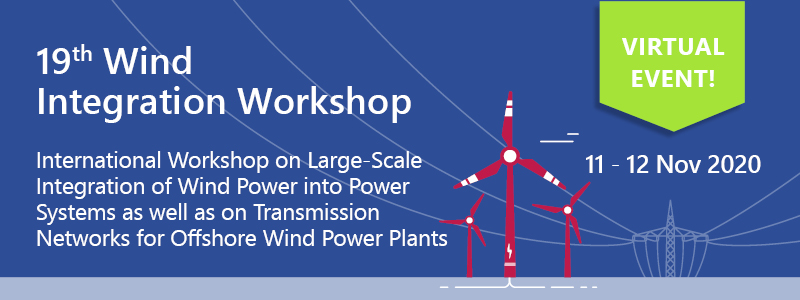Virtual Wind Integration Tutorial - Detailed Description
Ancillary Services: Their Role in Enabling Systems with Variable Renewable Energy (VRE) and how VRE Can Participate in them
On Tuesday, 10 November 2020, prior to the start of the Wind Integration Workshop, a tutorial will be held by Energynautics on “Ancillary Services: Their role in enabling systems with large shares Variable Renewable Energy (VRE) and how VRE can participate in them.
Find below a detailed description of the issues touched in these tutorials:
Session 1: Role of ancillary services towards enabling systems with Variable Renewable Energy (VRE)
The first 45 minutes block will introduce how ancillary services must be reshaped to guarantee a safe, secure and reliable electric supply in the power systems with high VRE penetration. The presentation will include example of best international practices addressing, at least, the cases of Ireland, California and Germany.
- Introduction to Ancillary Services:
- Which are these services and what is their main purpose
- Frequency Control:
- Traditional services:
- Purpose, activation and dimensioning of reserves: Primary, Secondary and Tertiary.
- Service provider
- Reserve procurement frameworks: Bilateral contracts vs Markets
- Cost of the reserves, remuneration and cost recovery
- How are frequency control and traditional reserves affected by the increasing VRE penetration:
- Lack inertia
- Scarce of traditional service providers: Which technologies can replace conventional generation in the provision of ancillary services?
- Innovative services and new market mechanism in the context of VRE: Real time markets and their impact on ancillary services, Inertia products, fast frequency response, synthetic inertia or Ramping reserves
- Traditional services:
- Voltage control:
- Capabilities of conventional and VRE generators.
- Control schemes.
- Cost and procurement.
- Impact of VRE on reactive power demand and voltage control schemes.
- Black start:
- Basics of black start plans and analysis of example cases.
- The role of black starting and houseload units.
- Changes in black start plans incurred by high shares of VRE.
Session 2: Participation of VRE in the provision of ancillary services
Based on the developed understanding of session one the participants will develop a comprehensive understanding on grid related aspects of electric vehicle charging and how smart charging and vehicle to grid schemes can support the energy transition towards a fossil free economy, while staying within the grid constraints.
In the second thematic block the participants will be introduce to the technical and regulatory aspects on how VRE and converter-based technologies in general can participate in the provision of VRE in the provision of ancillary services:
- How can VRE participate in frequency balancing:
- Inverter capabilities and infrastructure needed
- Fast frequency response
- Upward reserve provision: Delta control
- How can VRE participate in voltage control:
- Reactive power capability of inverters
- Reactive power control modes
- Grid Forming Inverters: These novel technology of inverters that can operate as voltage sources and replicate many of the characteristics of Synchronous generators:
- Are they really needed?
- Is the technology ready?
- Can distributed resources participate in the provision of ancillary services?
- Smart Inverters: IEEE 1458
- Role of Aggregators
- Black start support with cellular approach

